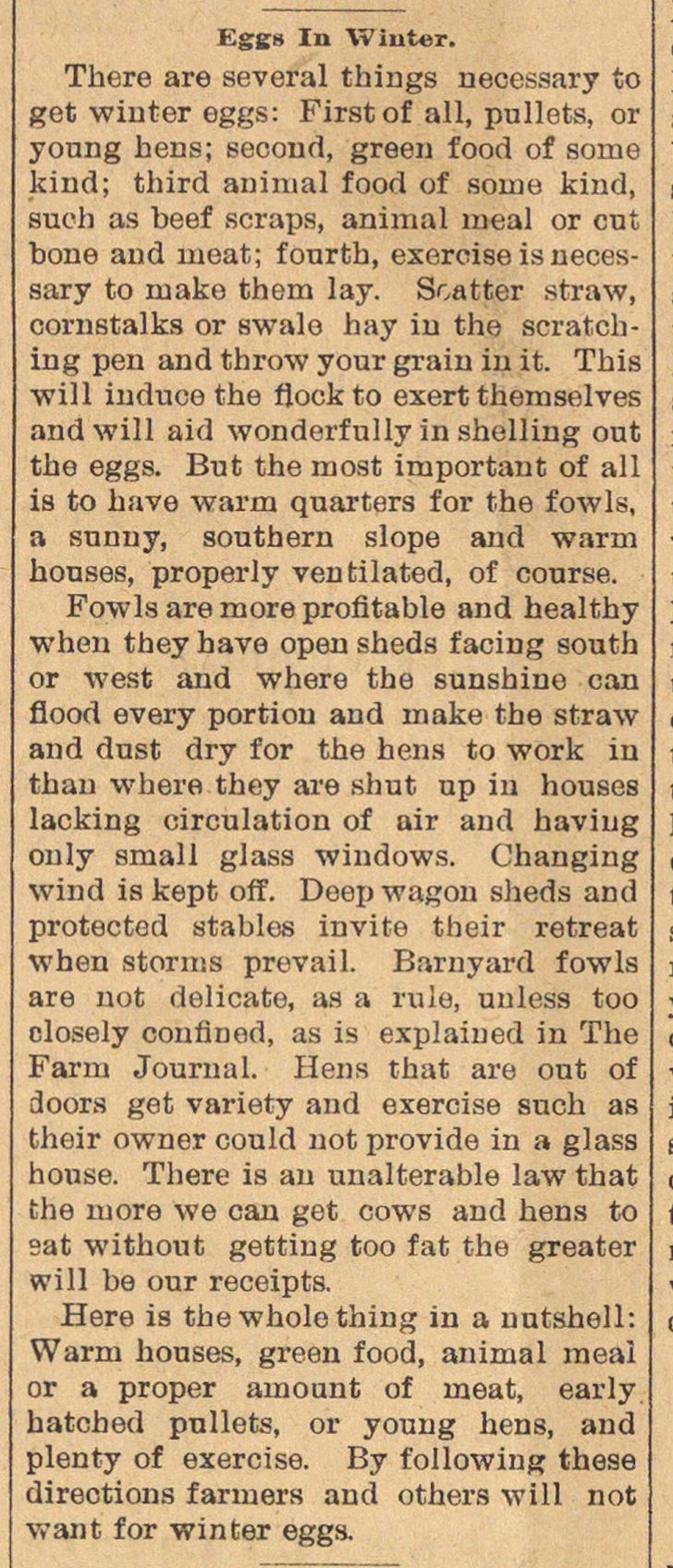Eggs In Winter

Tkere are several things necessary to get winter eggs: First of all, pullets, or yonng hens; secoud, green food of some kind; third animal food of soine kind, sucli as beef scraps, animal meal or cut bone and meat; fonrth, exeroise is necessary to ruake them lay. Scatter straw, comstalks or swalo hay in the scratching pen and throw your grain in it. This will induce the flockto exert themselves and will aid wonderfully in shelling out the eggs. But the most important of all is to have warm quarters for the fowls, a sunuy, southern slope and warm houses, properly ventilated, of course. Fowls are more profitable and healthy when they have open sheds f acing south or west and where the sunshine can flood every portiou and make the straw and dust dry for the hens to work in thaii where they are shut up in houses lacking circulation of air and haviug only small glass Windows. Changing wind is kept off. Deep wagon sheds and protectod stables invite their retreat when stornis prevail. Barnyard fowls are uot delicate, as a rulo, unless too closely coufinod, as is explaiued in The Farm Journal. Hens that are out of doors get variety and exercise such as their owner could uot provide in a glass house. There is au unalterable law that the more we eau get cows and hens to eat without getting too fat the greater will be our receipts. Here is the wholething in a nutshell: Warm houses, green food, animal meai or a proper ainount of meat, early hatched pullets, or young hens, and plenty of exercise. By following these direotions farmers and others will not want for winter eggs.
Article
Subjects
Ann Arbor Argus
Old News